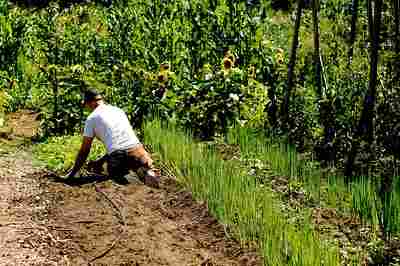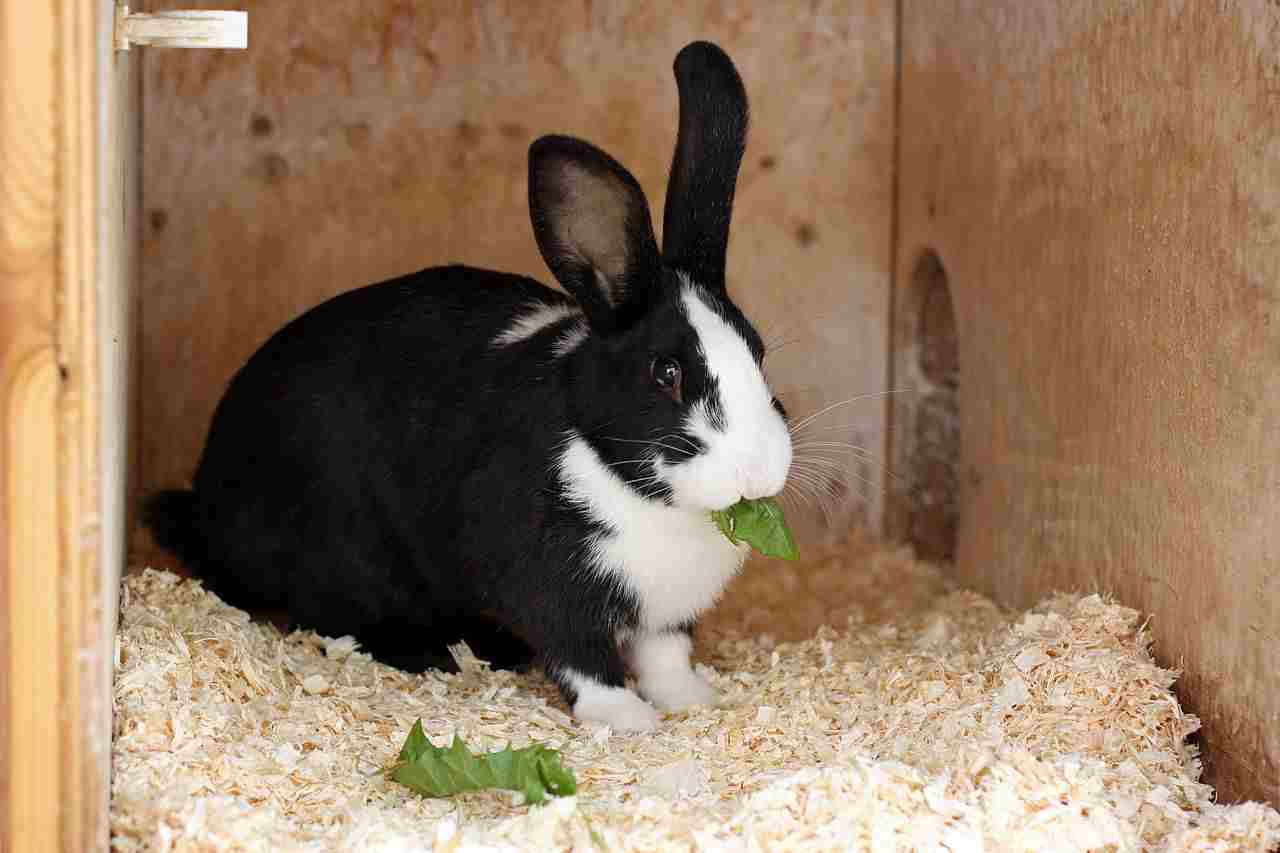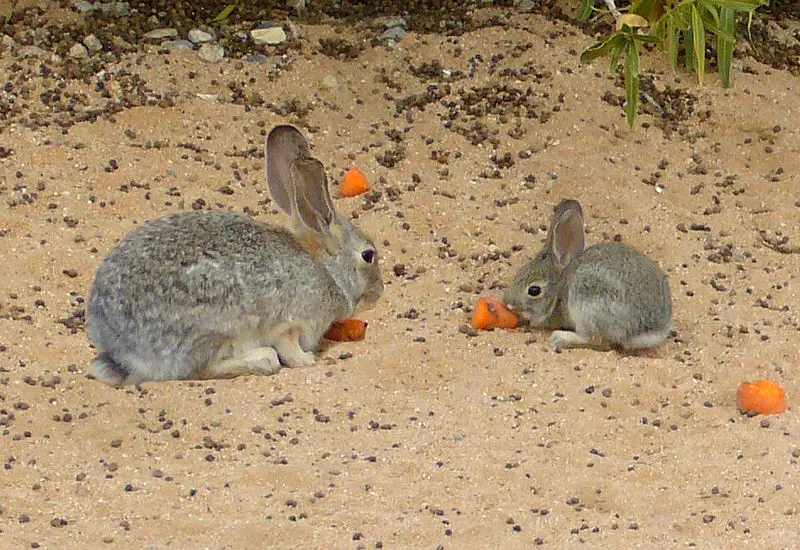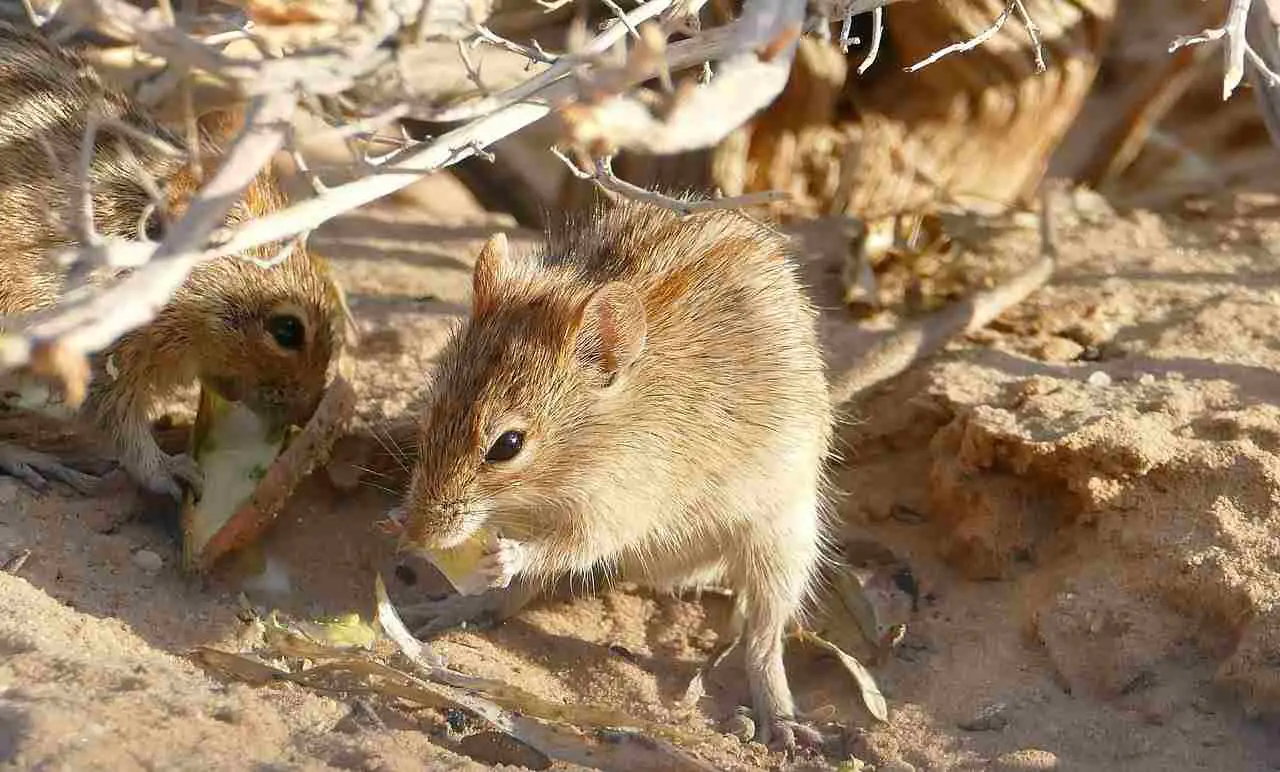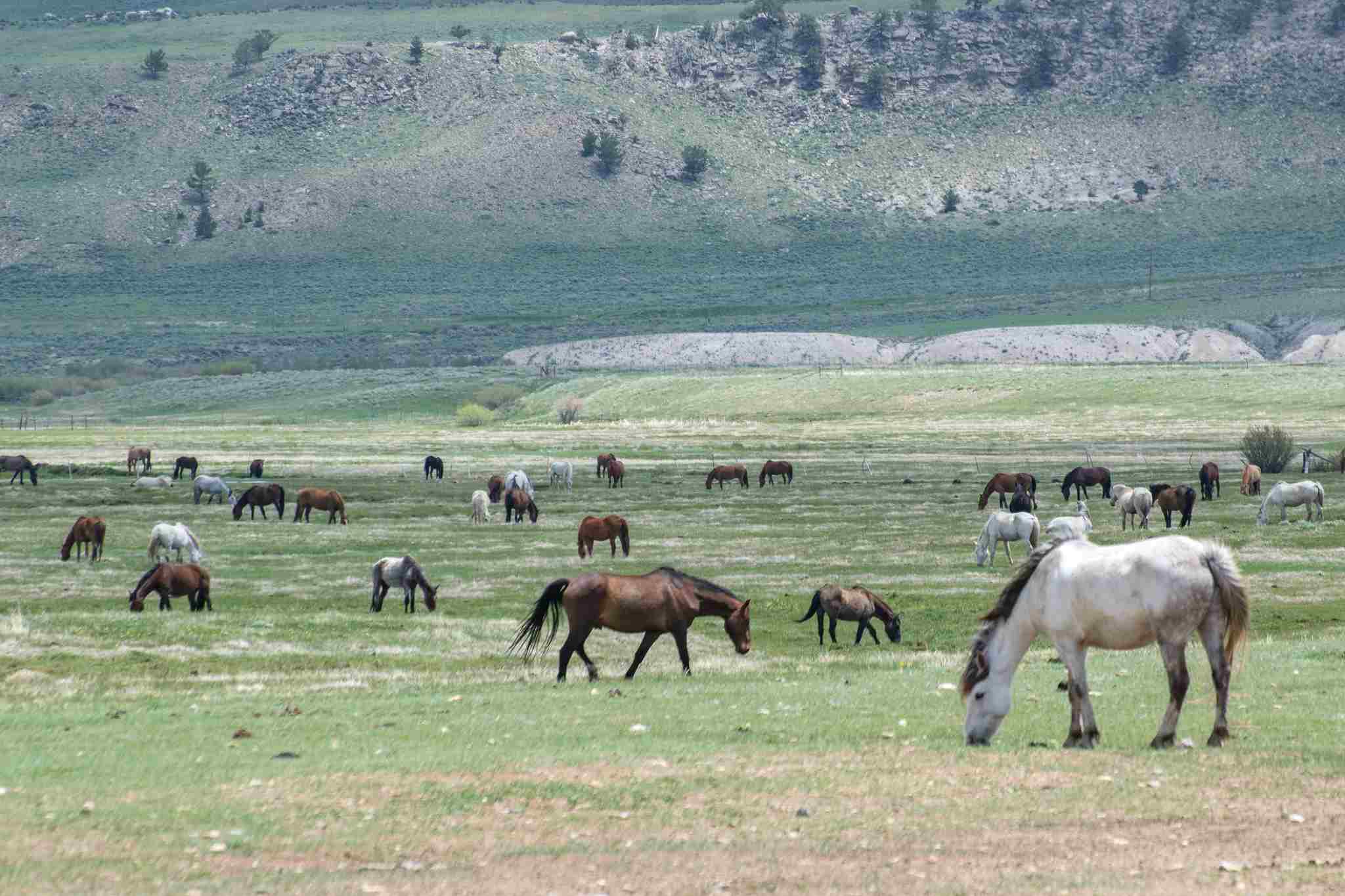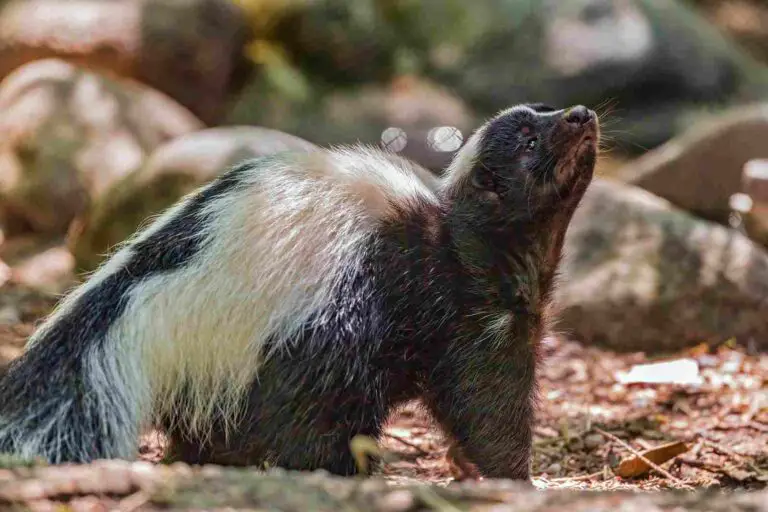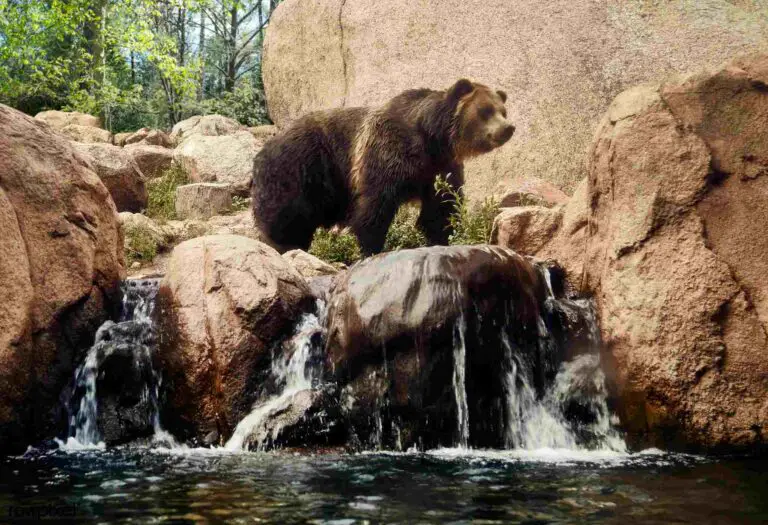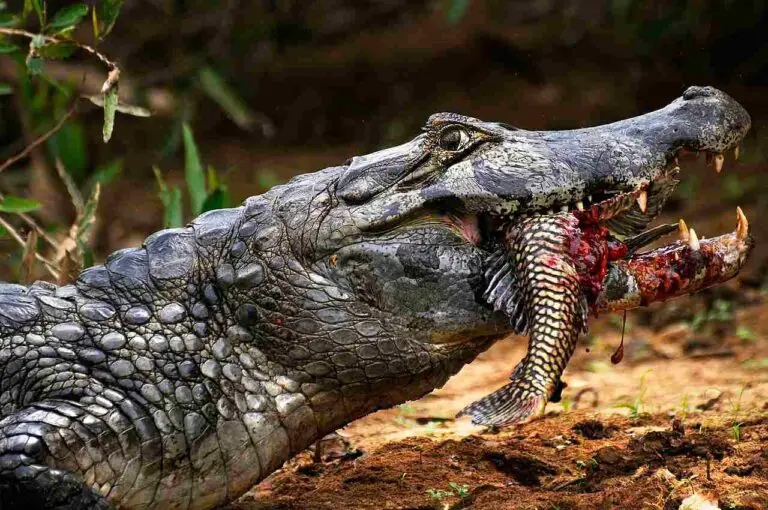Rabbit Vs Squirrel Tracks, Droppings, Overall Comparison
Venturing into the realm of small mammals, the comparison between rabbits and squirrels reveals intriguing distinctions. From their dietary preferences to physical characteristics and entertaining encounters, understanding these differences enhances our appreciation for these common yet distinct creatures.
I. Dietary Habits:
– Squirrels, primarily tree-dwelling mammals, rely on a diet of nuts, seeds, and insects. Notably, they lack the ability to digest cellulose, avoiding grasses.
– In contrast, rabbits are ground-dwelling mammals with diets consisting predominantly of cellulose, grasses, and leafy weeds.
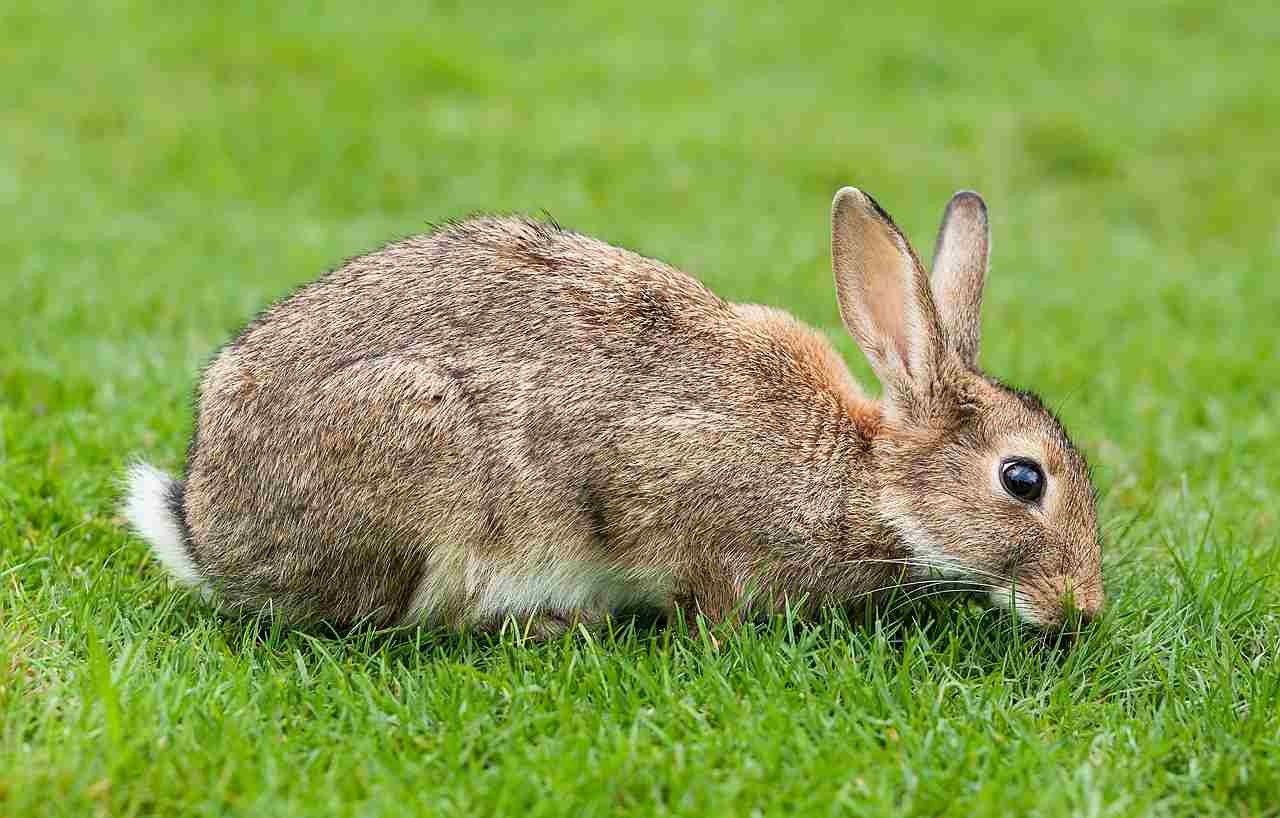
II. Physical Encounters:
– Videos and anecdotes depict amusing interactions between rabbits and squirrels, showcasing playful games, thumping displays, and occasional confrontations over food resources.
III. Size and Adaptations:
– Squirrels are known for their bushy tails and climbing abilities, while rabbits, with shorter tails, are generally larger and display a different set of adaptations.
IV. Online Discussions:
– Online forums host discussions on topics like the strength of squirrels versus rabbits, highlighting the curiosity surrounding these creatures.
V. Educational Resources:
– Information clarifies common misconceptions, emphasizing differences in tails and climbing abilities that aid in distinguishing between rabbits and squirrels.

VI. Animations and Storytelling:
– Animation videos explore creative portrayals of rabbit versus squirrel scenarios, contributing to children’s storytelling and moral lessons.
VI. Tracks in the Snow:
– Nature observations offer guidance on distinguishing between rabbit and squirrel tracks in the snow, focusing on toe features and fur presence.
VII. Meat Taste Comparison:
– Discussions delve into the taste of rabbit and squirrel meat, reflecting cultural perspectives and personal experiences.
VIII. Habitat and Behavior:
– Insightful details highlight behavioral differences, such as squirrels’ adept climbing skills and rabbits’ ground-dwelling nature.
IX. Fecal Characteristics:
– Examining fecal droppings becomes a distinguishing factor between rabbits and squirrels.
– Rabbit droppings, also known as pellets, are round and often clustered, resembling small, dry marbles.
– In contrast, squirrel droppings are elongated and tubular, displaying a more cylindrical shape.
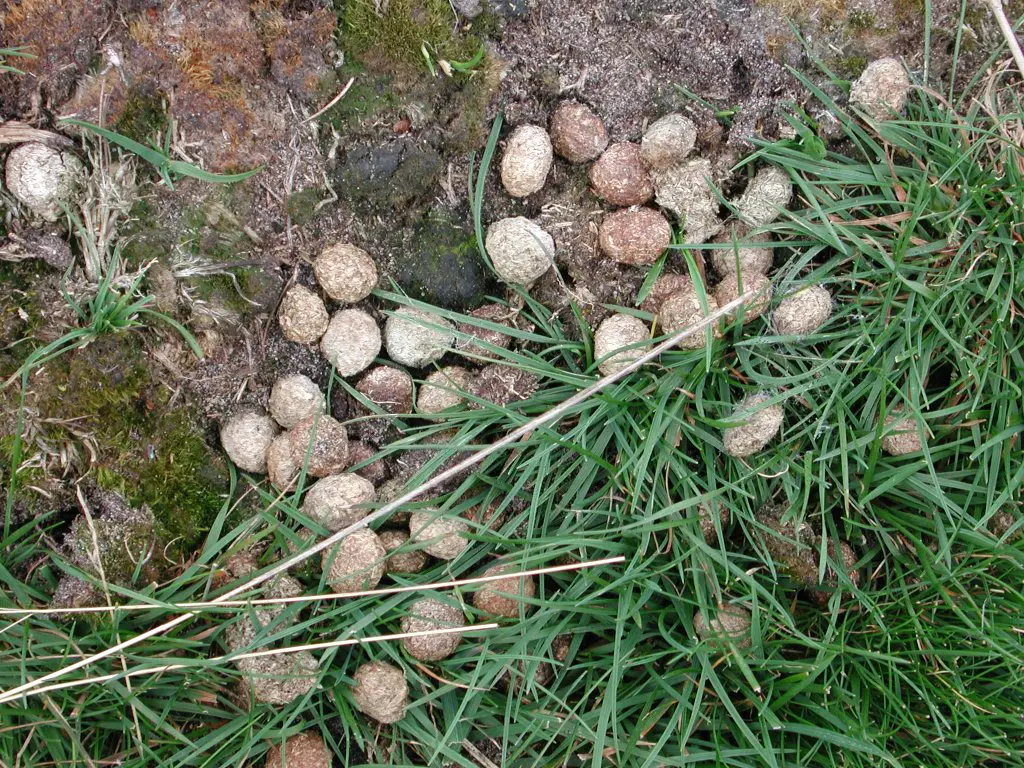
*Details of Comparison
| Criteria | Rabbit | Squirrel |
| Appearance | Compact with long ears |
Slender with bushy tails
|
| Size | Generally consistent medium size |
Broader size spectrum
|
| Weight | Substantial weight range |
Wider size range
|
| Dentition and Bite Force | Herbivorous dentition, limited bite force |
Rodent incisors, slightly higher bite force
|
| Offensive Advantages | Ground-based evasion, burrowing |
Versatile ground and tree-based defenses
|
| Defensive Advantages | Rapid acceleration, burrowing |
Climbing, camouflage
|
| Speed | Exceptional sprinters on the ground |
Agility on both ground and trees
|
| Agility | Ground-based agility |
Versatile for both ground and tree agility
|
| Senses | Acute hearing, motion detection emphasis |
Acute hearing, more developed color vision
|
| Physical Capacity | Specialized for ground activities |
Versatile for both ground and tree
|
| Habitat Preference | Often in open grasslands |
Thrive in diverse ecosystems
|
| Tracks | Elongated tracks |
Highlight claw marks, hopping pattern
|
| Lifespan | Variable, generally shorter lifespan |
Variable, generally longer lifespan
|
| Mode of Feeding | Herbivores, coprophagy |
Omnivores, scatter-hoarding behavior
|
| Intelligence | Basic problem-solving abilities |
Higher intelligence, memory
|
| Social Behavior | Often solitary, territorial |
Variable social structures, communal nesting
|
| Reproduction | Prolific breeders, short gestation |
Variable reproductive strategies
|
| Parental Behavior | Limited parental care, precocial young |
More involved care, altricial young
|
| Proximity to Humans | Adaptable to urban areas |
Highly adaptable to urban settings
|
| Behavior Toward Humans | Cautious, may flee |
Variable responses, some approach for food
|
Key Points
- Both species are adaptable to diverse habitats, including urban areas.
- While rabbits are ground-specialized, squirrels exhibit versatile agility in both ground and tree environments.
- Squirrels generally have higher intelligence, more complex social behaviors, and a longer potential lifespan.
- Rabbits are prolific breeders with shorter lifespans, whereas squirrel reproductive strategies vary.
- Squirrels invest more time and effort in parental care compared to rabbits.
- Both species pose minimal danger to humans and require caution to avoid stress or injury.
- Conservation statuses vary for both, with threats including habitat loss, climate change, and human activities.
1. Taxonomy
Rabbit:
Order: Lagomorpha
Family: Leporidae
Genus: Oryctolagus (European rabbit) or Sylvilagus (cottontail rabbits)
Species: Various species within the genera
Squirrel:
Order: Rodentia
Family: Sciuridae
Genus: Various genera (e.g., Sciurus, Tamias)
Species: Various species within the genera
2. Appearance
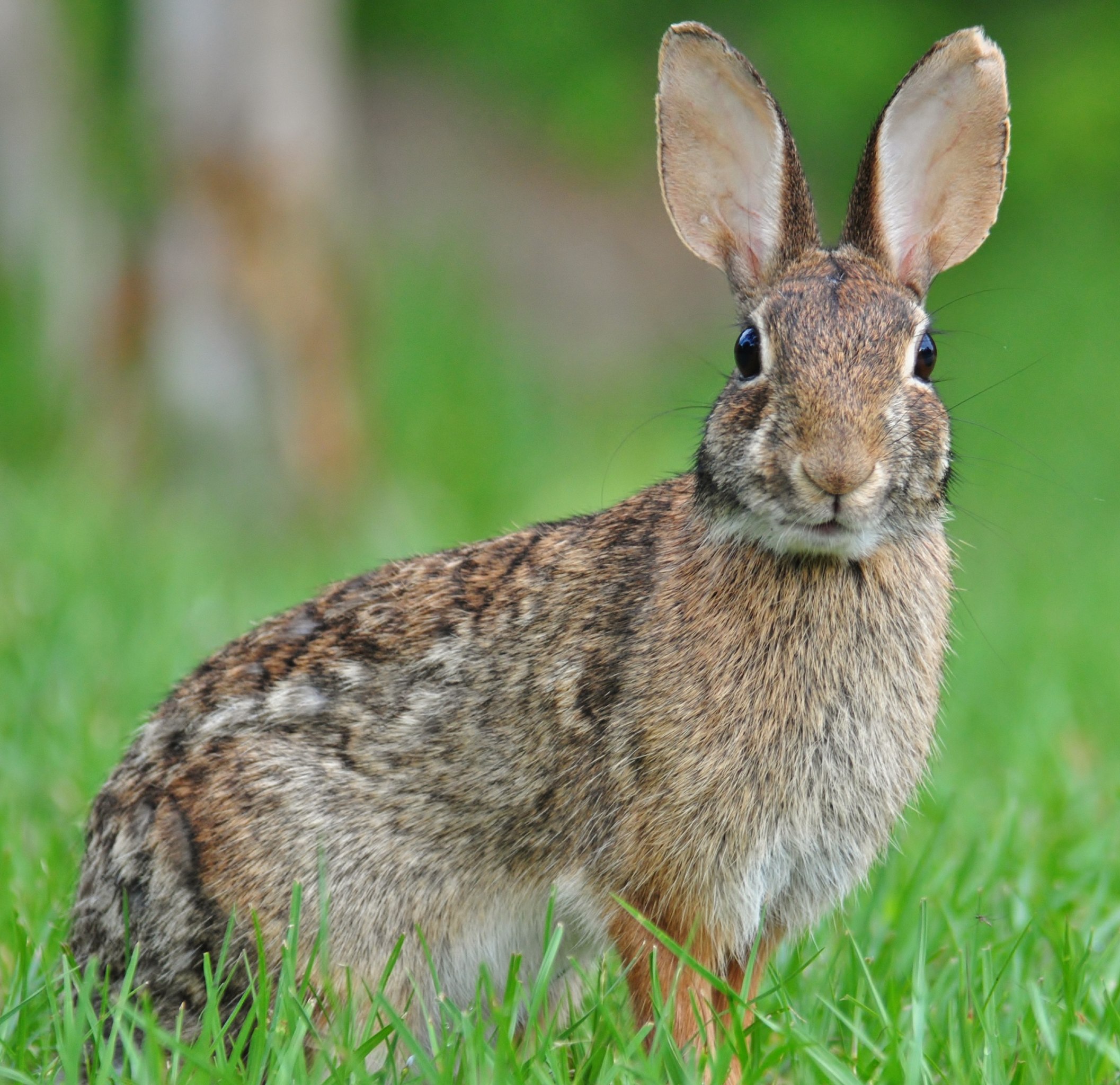
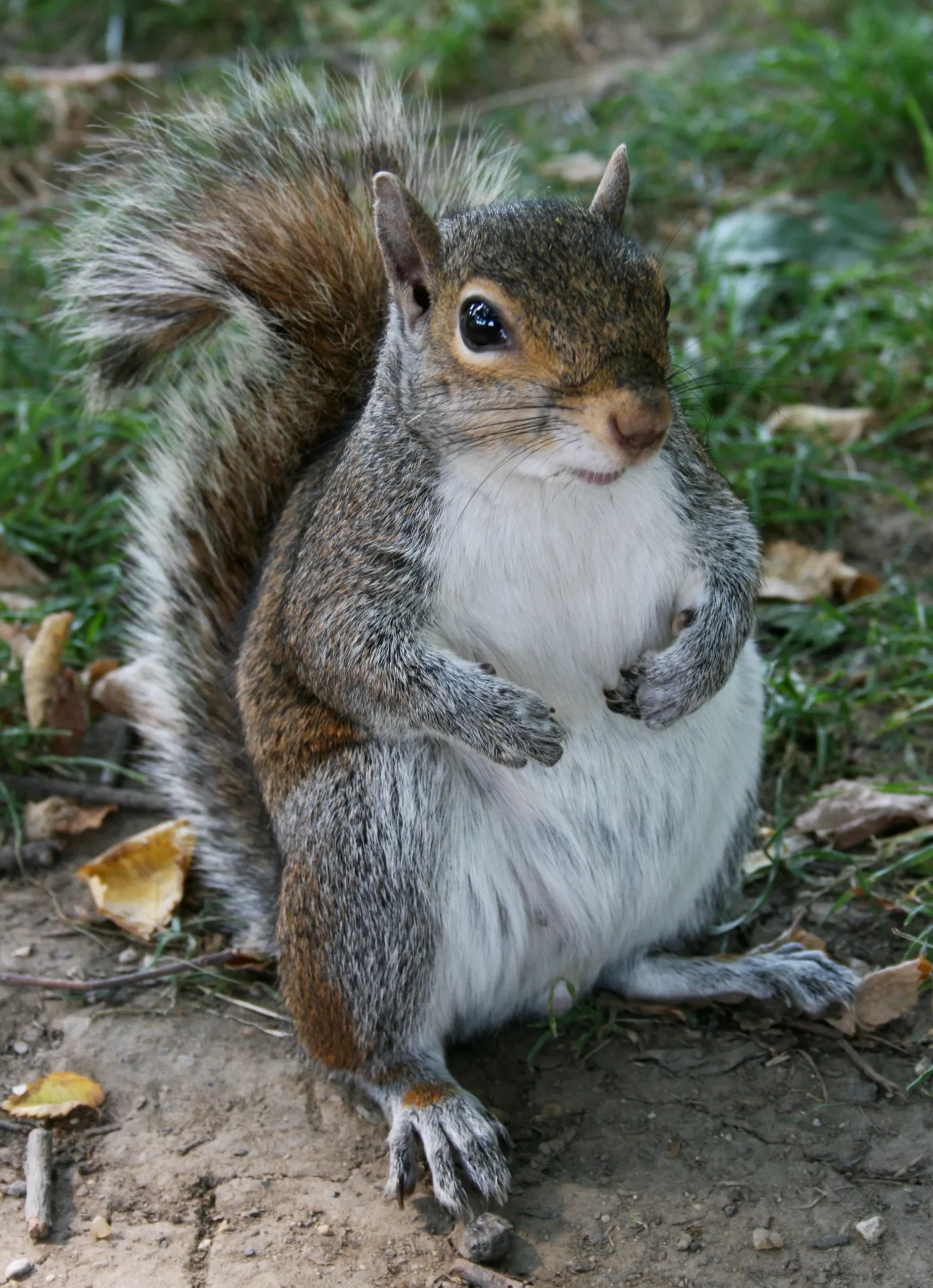
Rabbit:
Generally compact, with long ears and strong hind legs.
Fur color varies among species, providing camouflage in their respective habitats.
Adaptations like large eyes for enhanced peripheral vision.
Squirrel:
Characterized by a slender body, bushy tail, and sharp claws for climbing.
Fur coloration varies, aiding in camouflage within diverse environments.
Specialized adaptations such as cheek pouches for food storage.
Comparison: Rabbits typically have a more robust body structure, emphasizing powerful hind limbs, while squirrels exhibit a more streamlined physique, optimized for arboreal activities.
Ecological Implications: These distinct appearances contribute to their survival strategies – rabbits for rapid ground escape, and squirrels for efficient tree navigation.
3. Size
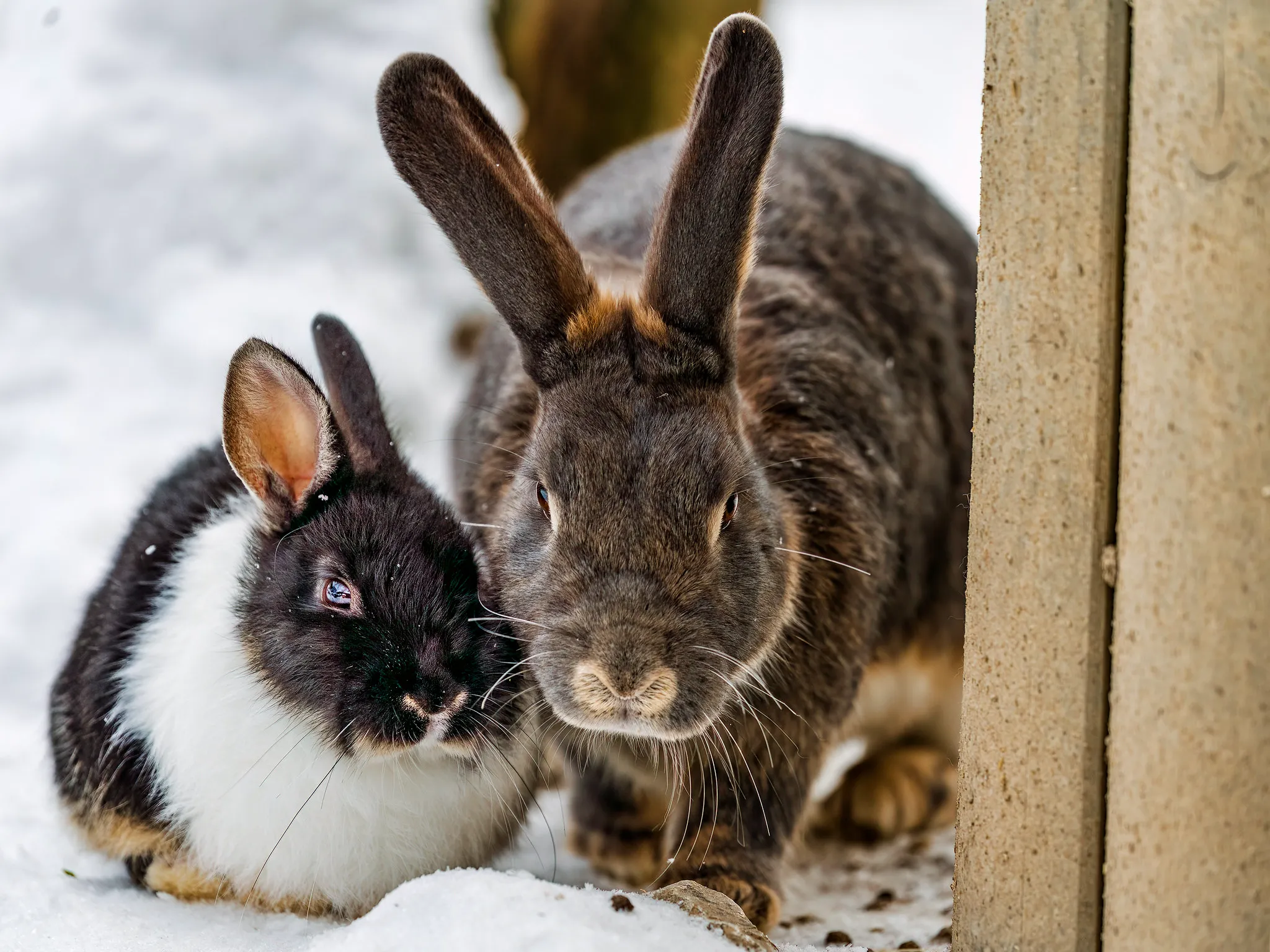
Rabbit:
Sizes vary among species; common rabbits range from 2 to 20 inches (5-50 cm) in length.
Compact and medium-sized, with variations like the cottontail or European rabbit.
Squirrel:
Sizes range widely, from 5 to 36 inches (13-91 cm) including the tail.
Varied sizes accommodate different ecological niches, from tiny chipmunks to larger tree squirrels.
Comparison: While there is overlap in size, rabbits generally exhibit a more consistent medium size, whereas squirrels showcase a broader size spectrum.
Ecological Implications: Size adaptations enable rabbits to navigate dense vegetation, while squirrels utilize size diversity for efficient exploitation of varied habitats.
4. Weight
Rabbit:
Weight varies; common rabbits weigh between 1 to 20 pounds (0.5-9 kg).
Body mass influenced by species, habitat, and available food resources.
Squirrel:
Weights range from a few ounces to over 4 pounds (100 g – 2 kg).
Diverse sizes reflect adaptations to different ecological niches.
Comparison: Rabbits tend to have a more substantial weight range compared to squirrels, with some larger rabbit species exceeding the heaviest squirrels.
Ecological Implications: Weight variations are crucial for both species, influencing energy expenditure, predation avoidance, and adaptation to specific ecosystems.
5. Dentition and Bite Force (PSI)
Rabbit:
Herbivorous dentition, adapted for grinding plant material.
Limited bite force, generally around 200-300 pounds per square inch (PSI).
Squirrel:
Rodent incisors for gnawing on nuts and seeds.
Bite force varies; tree squirrels possess around 200-400 PSI, adapted for cracking hard shells.
Comparison: While both are herbivores, rabbits specialize in grinding, and squirrels in gnawing. Squirrels often have a slightly higher bite force.
Ecological Implications: Dental adaptations align with their primary food sources, optimizing resource utilization within their respective ecosystems.
6. Physical Offensive Advantages
Rabbit:
Powerful hind limbs for swift escapes and evading predators.
Sharp claws aid in digging burrows for shelter and protection.
Squirrel:
Sharp incisors for gnawing and defense against predators.
Agile climbing ability provides escape routes in trees.
Comparison: Rabbits emphasize ground-based evasion, utilizing powerful hind limbs, while squirrels leverage both ground and tree-based defense mechanisms.
Ecological Implications: These offensive traits are tailored to their respective habitats, enhancing survival against different predators.
7. Physical Defensive Advantages
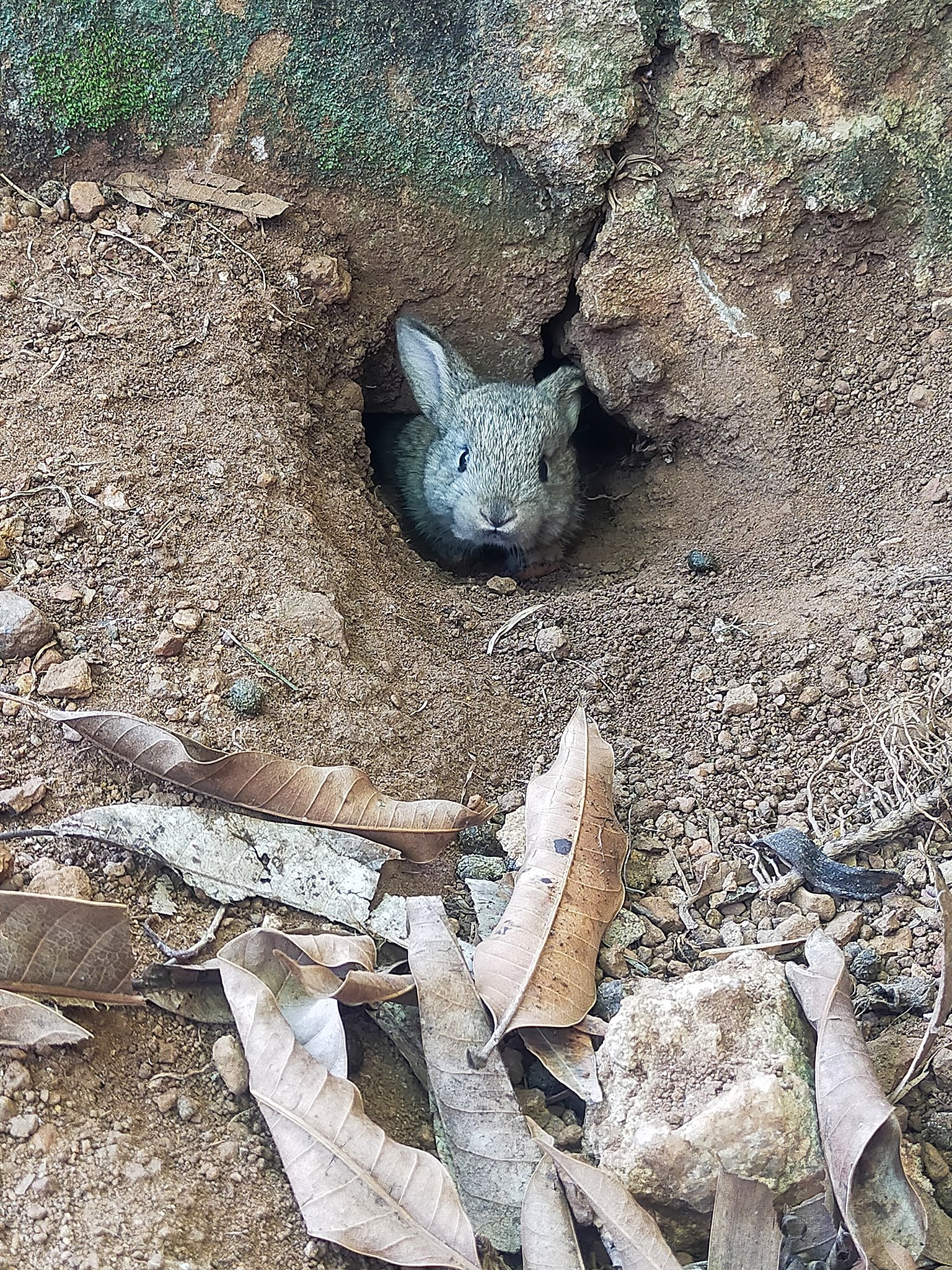
Rabbit:
Rapid acceleration and zigzag running patterns for evading predators.
Burrowing behavior as a primary defense mechanism.
Squirrel:
Quick climbing abilities to escape ground-based threats.
Camouflage and stillness to avoid detection in tree branches.
Comparison: Rabbits primarily rely on rapid ground-based maneuvers and burrowing, whereas squirrels excel in both ground and tree-based evasion strategies.
Ecological Implications: Adaptations for defense play a crucial role in minimizing predation risks in their respective ecosystems.
8. Speed (Km/hour or Mile/hour)
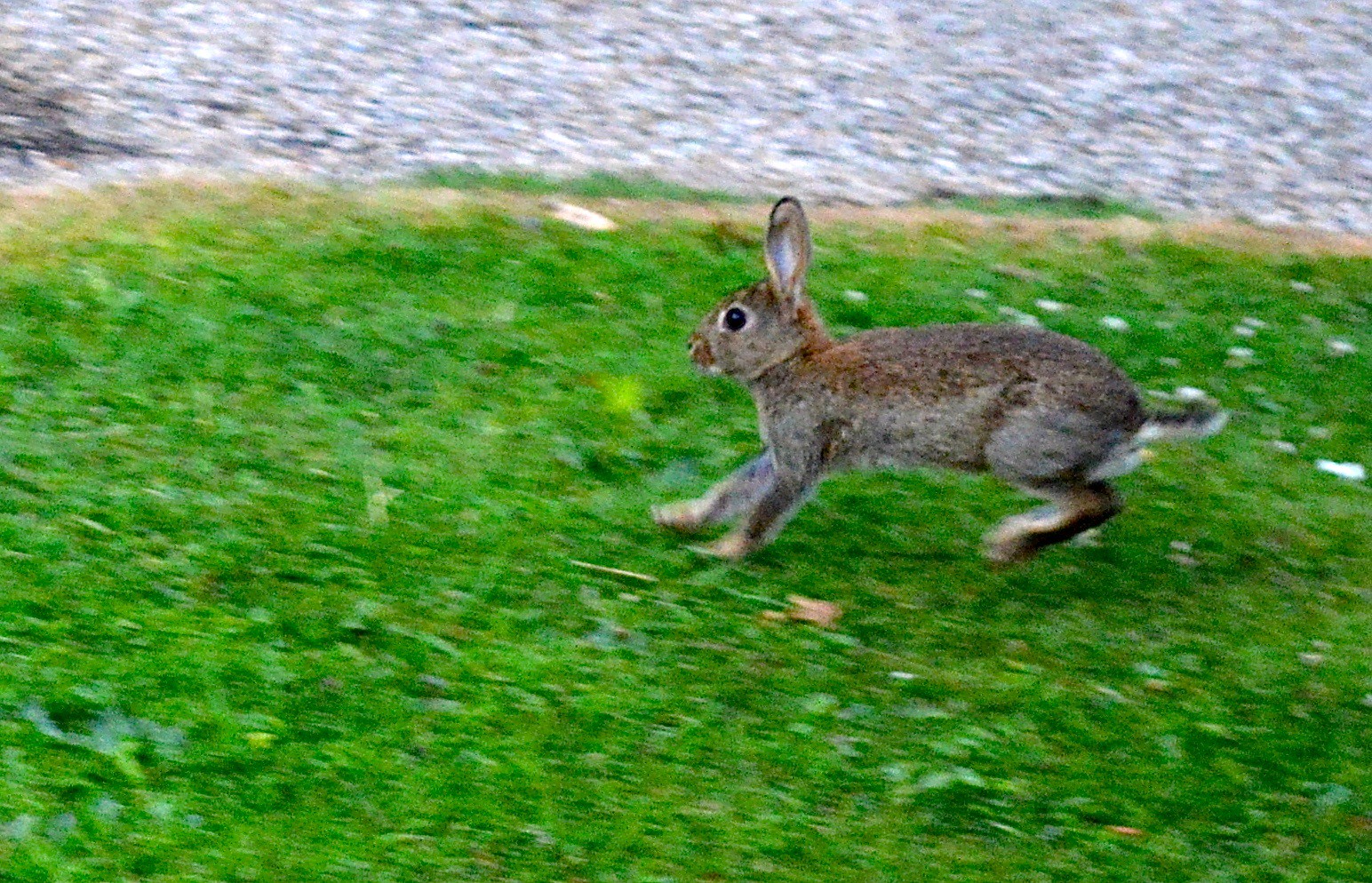
Rabbit:
High-speed runners, reaching speeds of 35-45 mph (56-72 km/h).
Evolving speed as a primary defense mechanism.
Squirrel:
Agile and swift, with ground speeds ranging from 8-20 mph (13-32 km/h).
Enhanced speed for evading predators on both ground and trees.
Comparison: Rabbits showcase exceptional sprinting speeds, emphasizing ground escape, while squirrels balance agility in both ground and tree environments.
Ecological Implications: These speed adaptations are crucial for predator avoidance and successful foraging, aligning with their ecological roles.
9. Agility
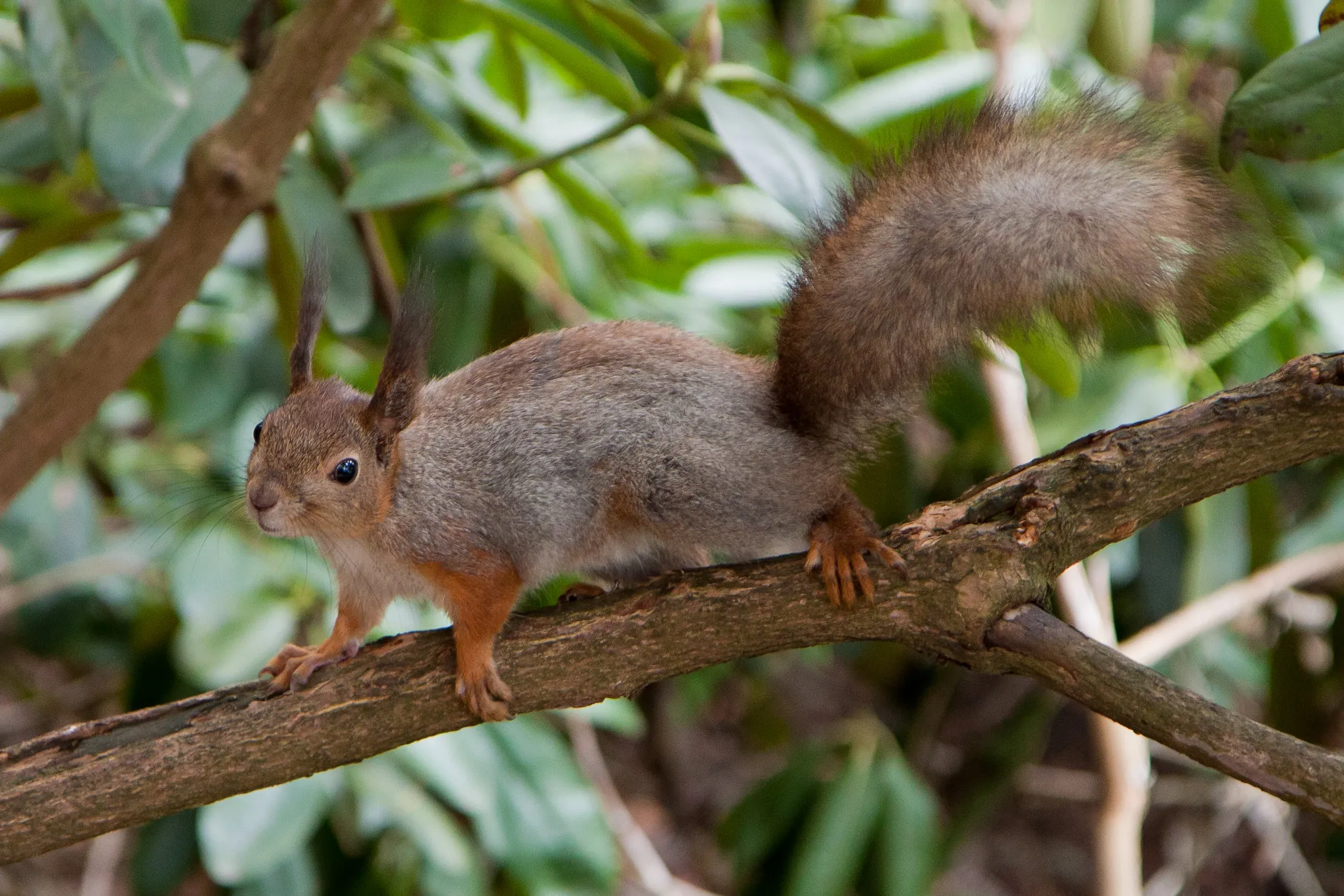
Rabbit:
Nimble footwork and quick changes in direction.
Well-suited for navigating dense vegetation and avoiding predators.
Squirrel:
Exceptional climbing skills, leaping between branches with precision.
Agile movements aid in escaping both ground and aerial threats.
Comparison: While both are agile, rabbits showcase ground-based agility, while squirrels excel in arboreal agility, utilizing trees as an additional escape route.
Ecological Implications: Agility is vital for negotiating the varied terrains within their habitats, contributing to their overall survival strategies.
10. Senses
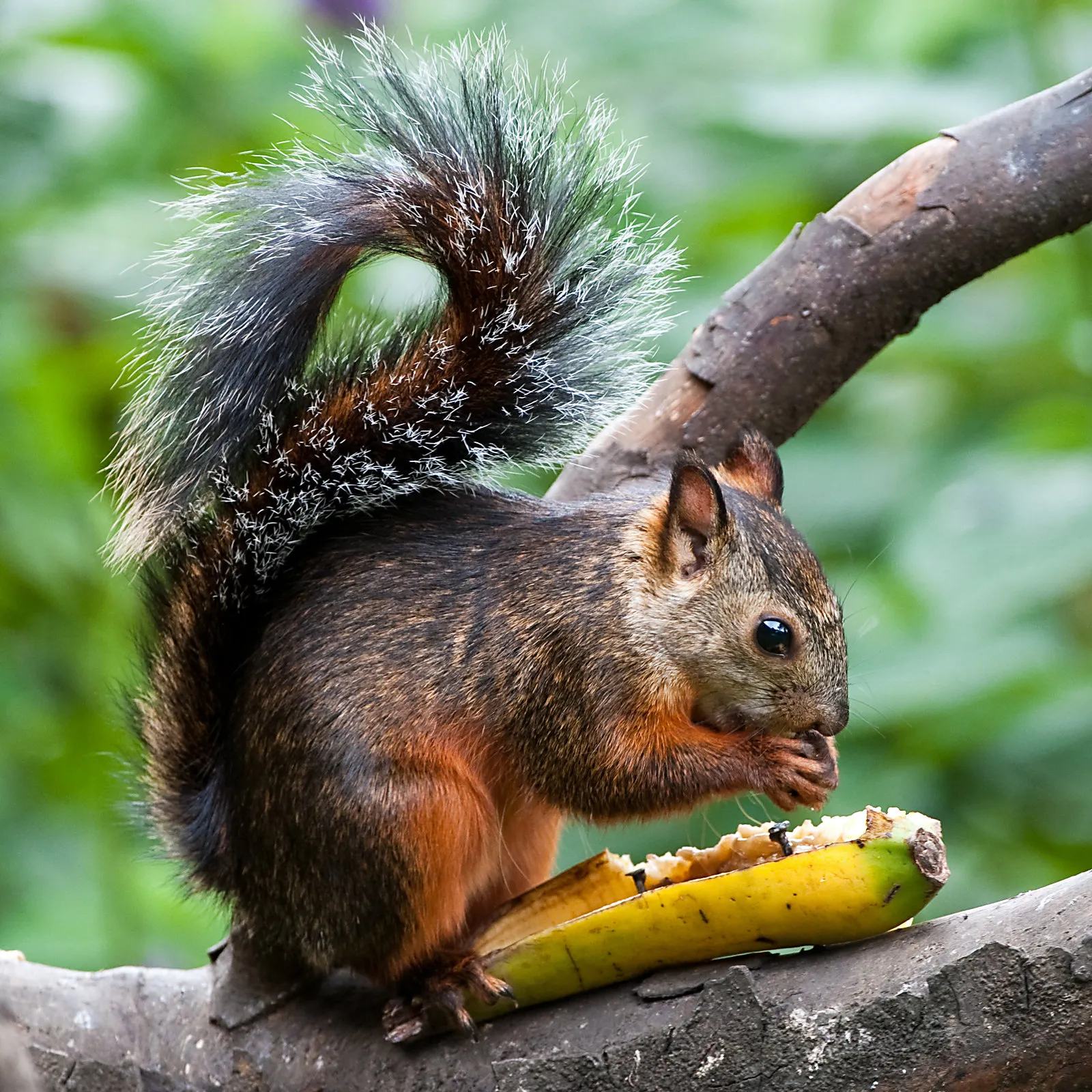
Rabbit:
Excellent hearing with large ears, crucial for detecting predators.
Good peripheral vision to monitor surroundings for potential threats.
Limited color vision but highly sensitive to motion.
Squirrel:
Acute sense of hearing to detect predators and locate food sources.
Well-developed vision, including color perception, aiding in foraging.
Vibrissae (whiskers) for detecting changes in the environment.
Comparison: Both species rely heavily on acute hearing to detect predators, but rabbits focus more on motion detection, while squirrels have a more developed color vision for foraging.
Ecological Implications: These sensory adaptations enhance their ability to navigate and survive in their respective habitats.
11. Overall Physical Capacity
Rabbit:
Adapted for rapid, ground-based locomotion.
Strong hind limbs for powerful leaps and quick changes in direction.
Squirrel:
Versatile physical capabilities for both ground and tree-based activities.
Strong claws for climbing, leaping, and navigating in arboreal environments.
Comparison: While both species possess unique physical capacities, rabbits are specialized for ground activities, while squirrels demonstrate versatility for both ground and tree environments.
Ecological Implications: These adaptations align with their ecological roles, allowing efficient utilization of resources and survival in different habitats.
12. Habitat Preference(s) and Geographic Region
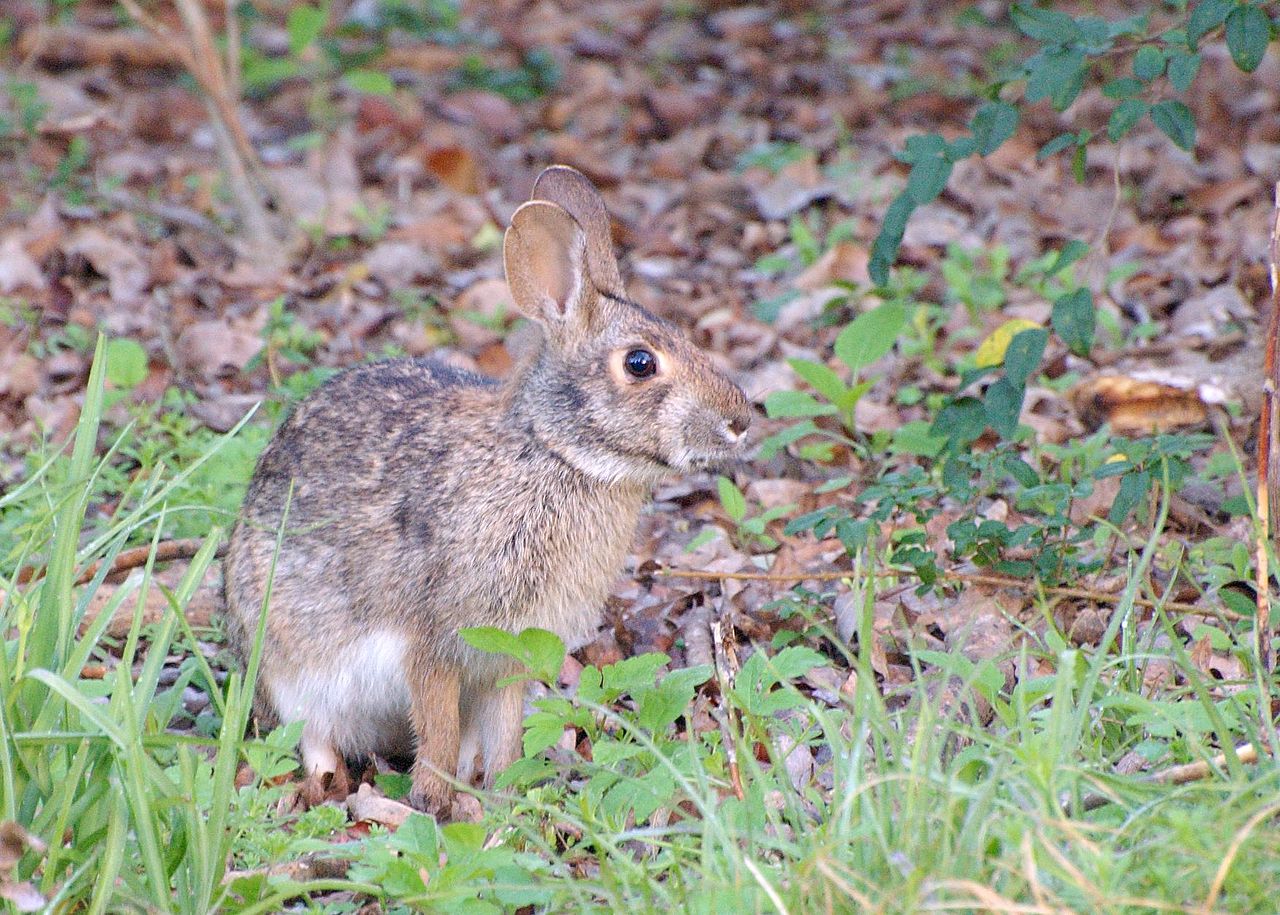
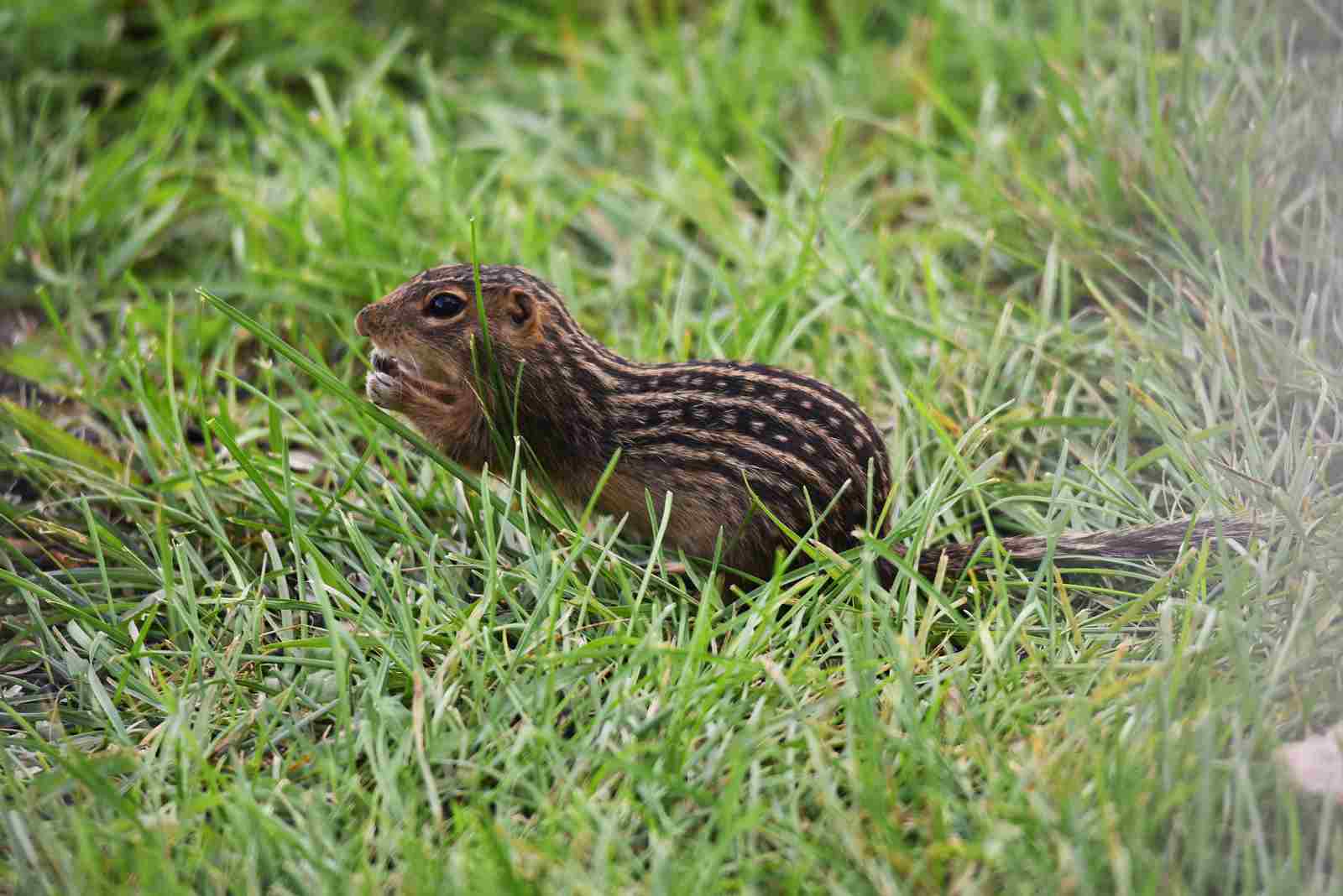
Rabbit:
Diverse habitats, including grasslands, meadows, forests, and deserts.
Widely distributed across Europe, Asia, Africa, and the Americas.
Squirrel:
Varied habitats, such as forests, urban areas, and grasslands.
Found in regions spanning North and South America, Europe, Asia, and Africa.
Comparison: While both species exhibit habitat flexibility, rabbits often dominate open grasslands, while squirrels thrive in diverse ecosystems, including urban environments.
Ecological Implications: Habitat preferences influence ecosystem dynamics and contribute to the distribution of these species across different regions.
13. Tracks
Rabbit:
Hind feet with distinctive long, narrow tracks.
Front feet leave smaller imprints, often appearing in pairs.
Squirrel:
Smaller tracks with distinctive claw marks.
Front and hind feet tracks typically show a bounding or hopping pattern.
Comparison: Rabbit tracks are more elongated, reflecting their powerful hind limb propulsion, while squirrel tracks highlight claw marks and a hopping pattern.
Ecological Implications: These track characteristics assist in tracking and identifying the presence of these species in their respective habitats.
14. Lifespan
Rabbit:
Lifespan varies by species, generally ranging from 1 to 10 years.
Influenced by factors such as predation, habitat, and available resources.
Squirrel:
Lifespan varies widely, from 5 to 20 years, depending on the species.
Urban-dwelling squirrels often have shorter lifespans due to increased risks.
Comparison: Squirrels generally have a longer potential lifespan compared to rabbits, with both influenced by environmental factors.
Ecological Implications: Lifespan dynamics contribute to population stability and ecological interactions within their respective habitats.
15. Mode of Feeding
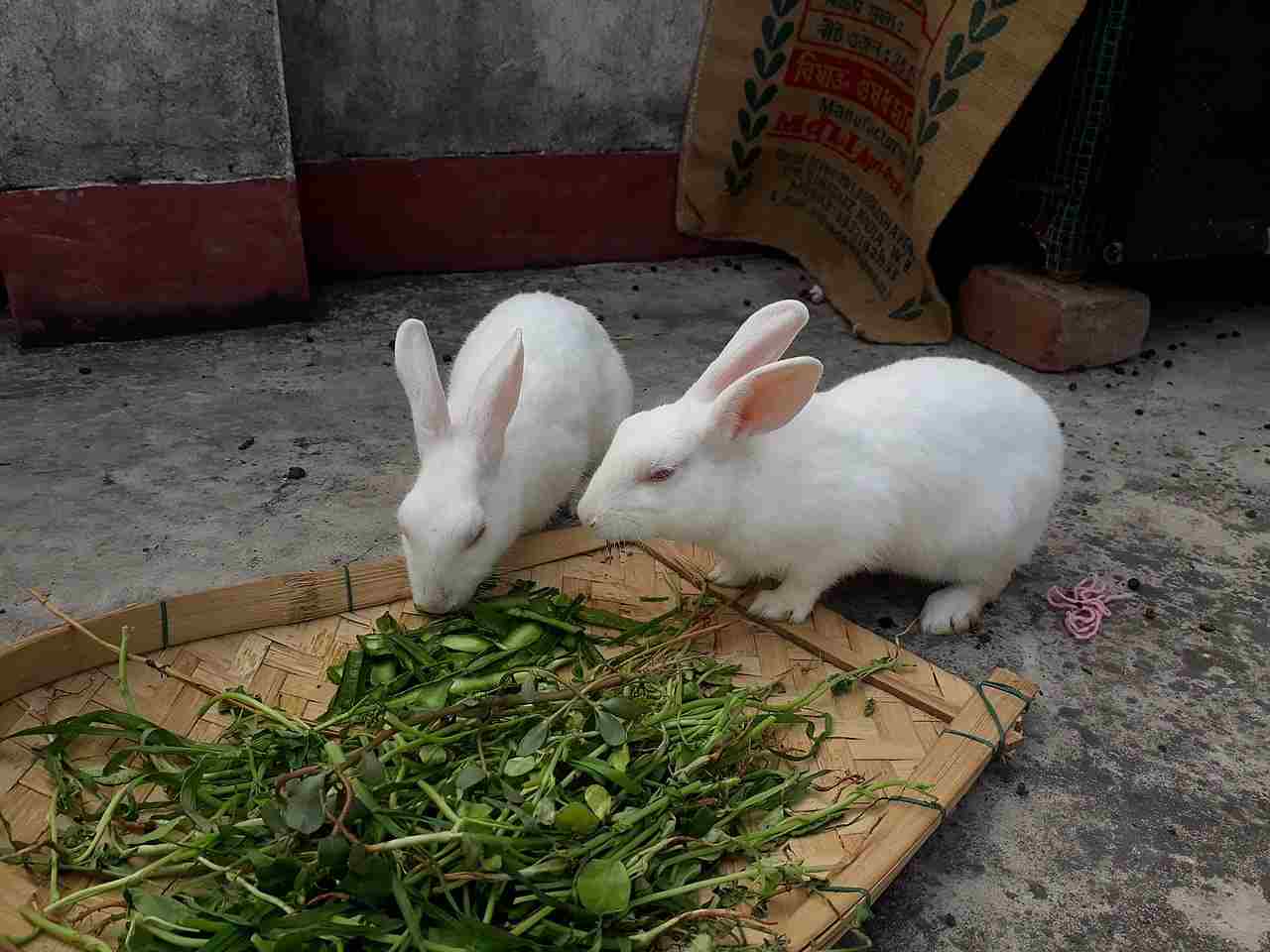
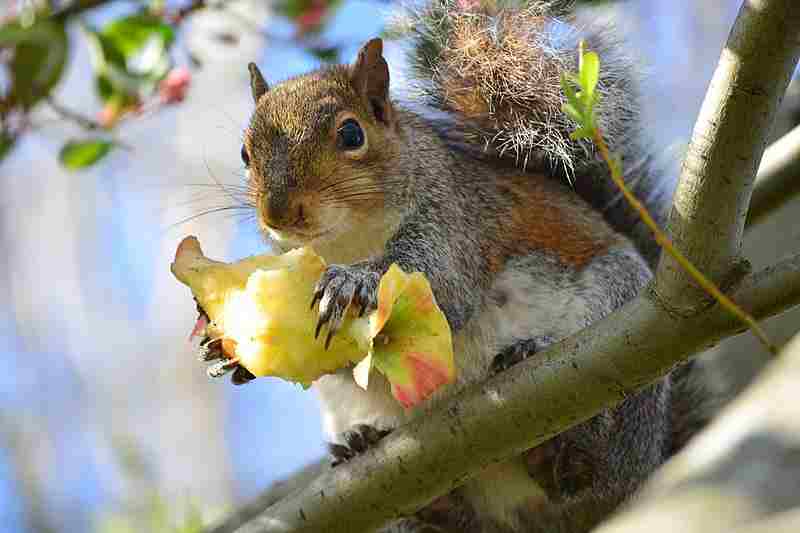
Rabbit:
Herbivores with a diet primarily consisting of grasses, herbs, and vegetables.
Coprophagy – re-ingestion of feces to extract additional nutrients.
Squirrel:
Omnivores with a varied diet including nuts, seeds, fruits, insects, and fungi.
Scatter-hoarding behavior, storing food in different locations for future consumption.
Comparison: While both are herbivores, squirrels exhibit a more varied diet, including animal matter, and engage in scatter-hoarding behavior.
Ecological Implications: Differences in feeding behavior contribute to shaping plant and animal communities within their ecosystems.
16. Intelligence
Rabbit:
Display basic problem-solving abilities.
Reliance on instinctual behaviors for survival.
Squirrel:
Demonstrates high intelligence, problem-solving skills, and memory.
Utilizes spatial memory for locating stored food caches.
Comparison: Squirrels generally exhibit higher cognitive abilities, utilizing problem-solving skills in tasks such as cache retrieval.
Ecological Implications: Intelligence influences foraging efficiency, adaptability, and the ecological impact of these species in their environments.
17. Social Behavior
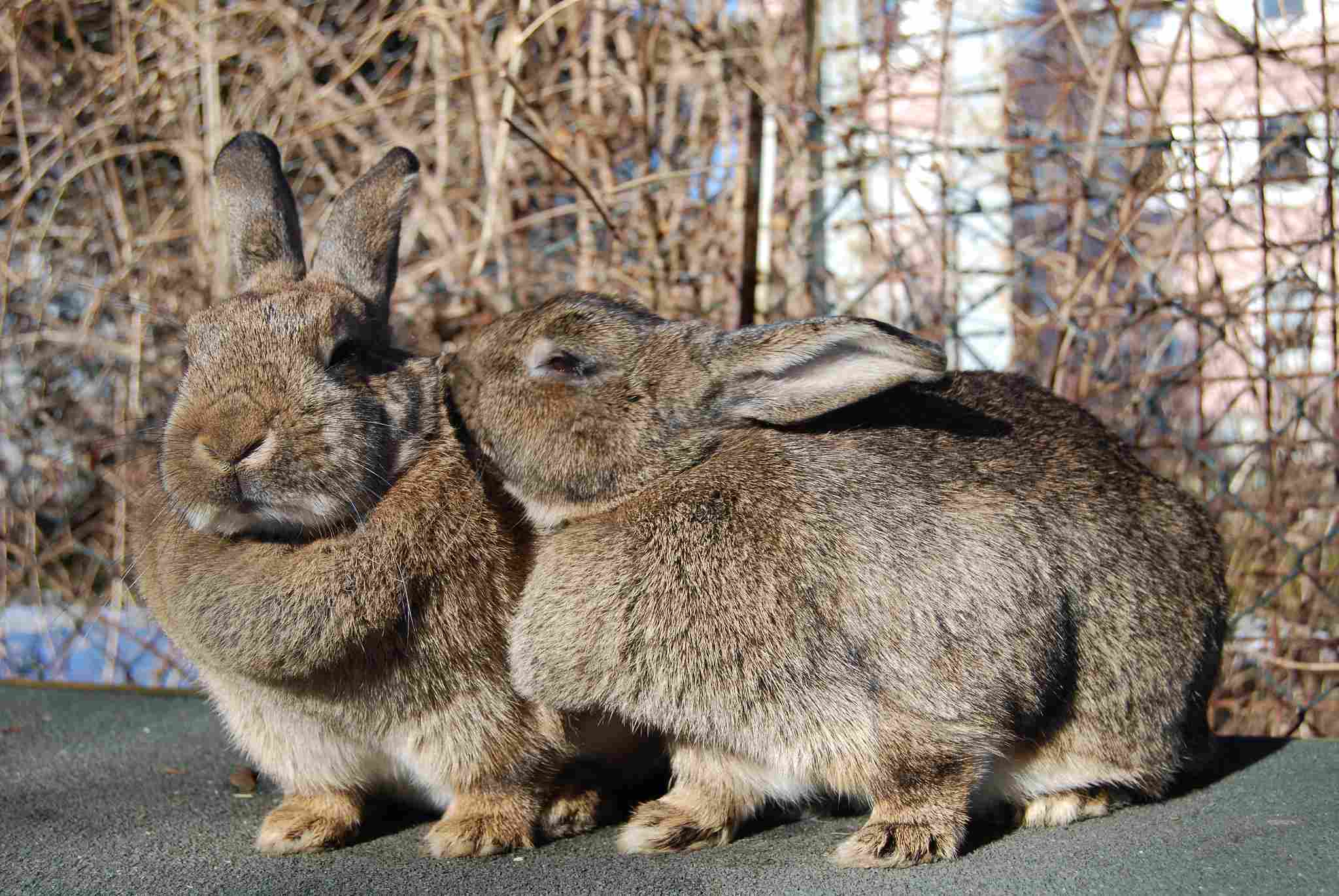
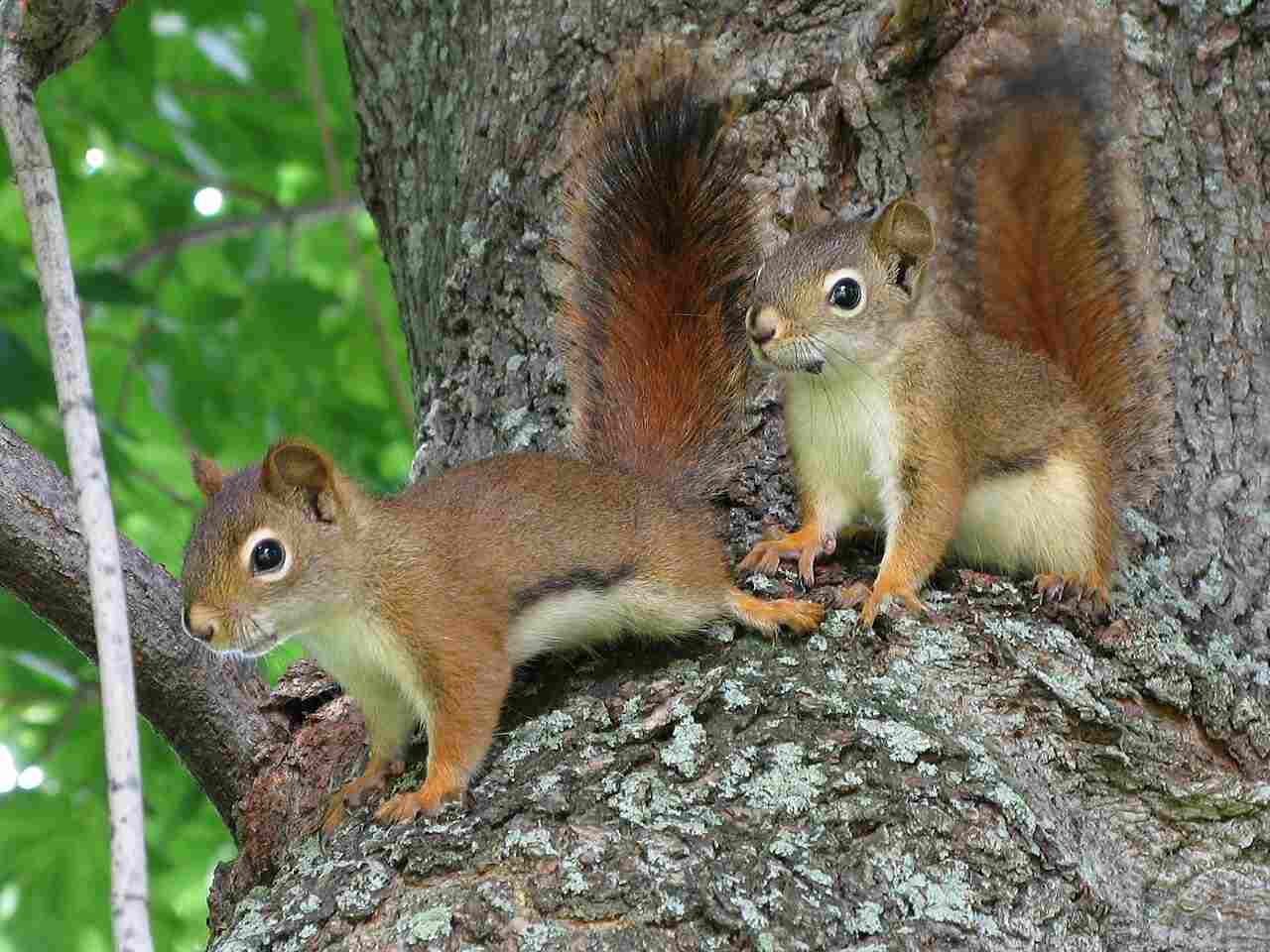
Rabbit:
Often solitary, with exceptions during breeding season.
Establish territories and communicate through thumping sounds.
Squirrel:
Varied social structures, ranging from solitary to highly social.
Tree squirrels may share nests, and ground squirrels often live in colonies.
Comparison: While both species can be solitary, squirrels exhibit a broader range of social behaviors, including communal nesting and cooperative interactions.
Ecological Implications: Social structures impact resource competition, reproductive strategies, and overall population dynamics within their ecosystems.
18. Mode of Reproduction
Rabbit:
Highly prolific breeders with short gestation periods.
Females often give birth to multiple litters per year, contributing to rapid population growth.
Squirrel:
Variable reproductive strategies, with some species having multiple litters.
Gestation periods and breeding frequency depend on the specific squirrel species.
Comparison: Both species exhibit prolific breeding, but rabbits are often noted for their exceptionally high reproductive rates.
Ecological Implications: Reproductive strategies influence population dynamics, resource competition, and predator-prey interactions within ecosystems.
19. Parental Behavior
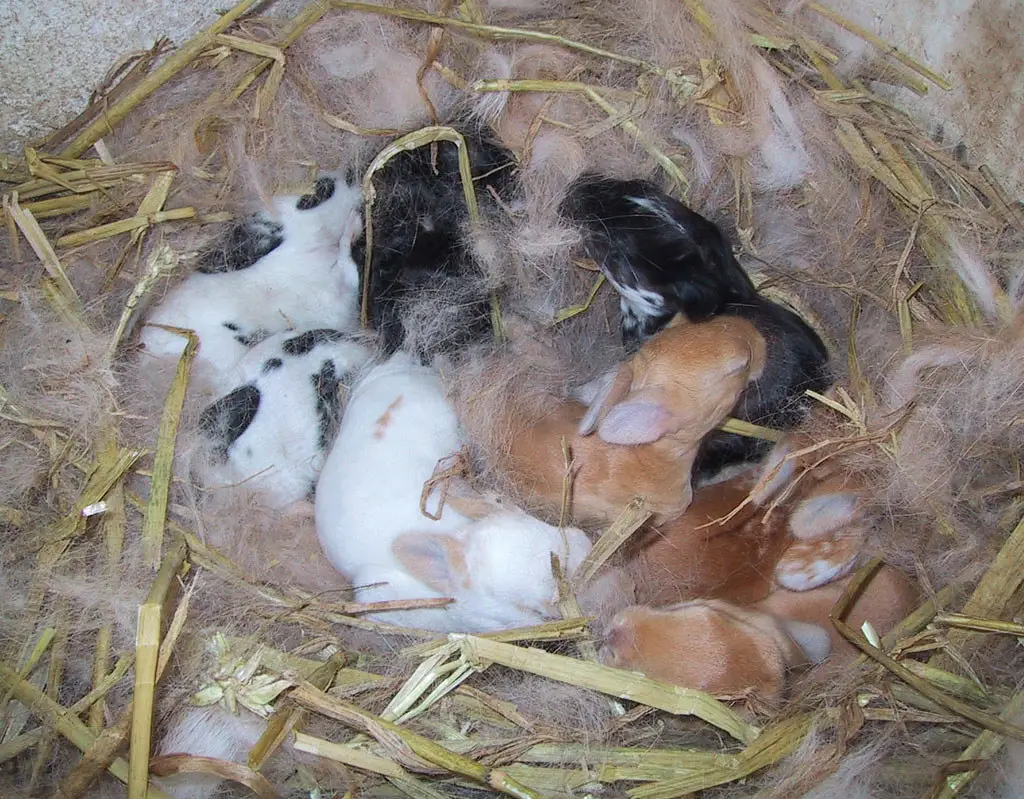
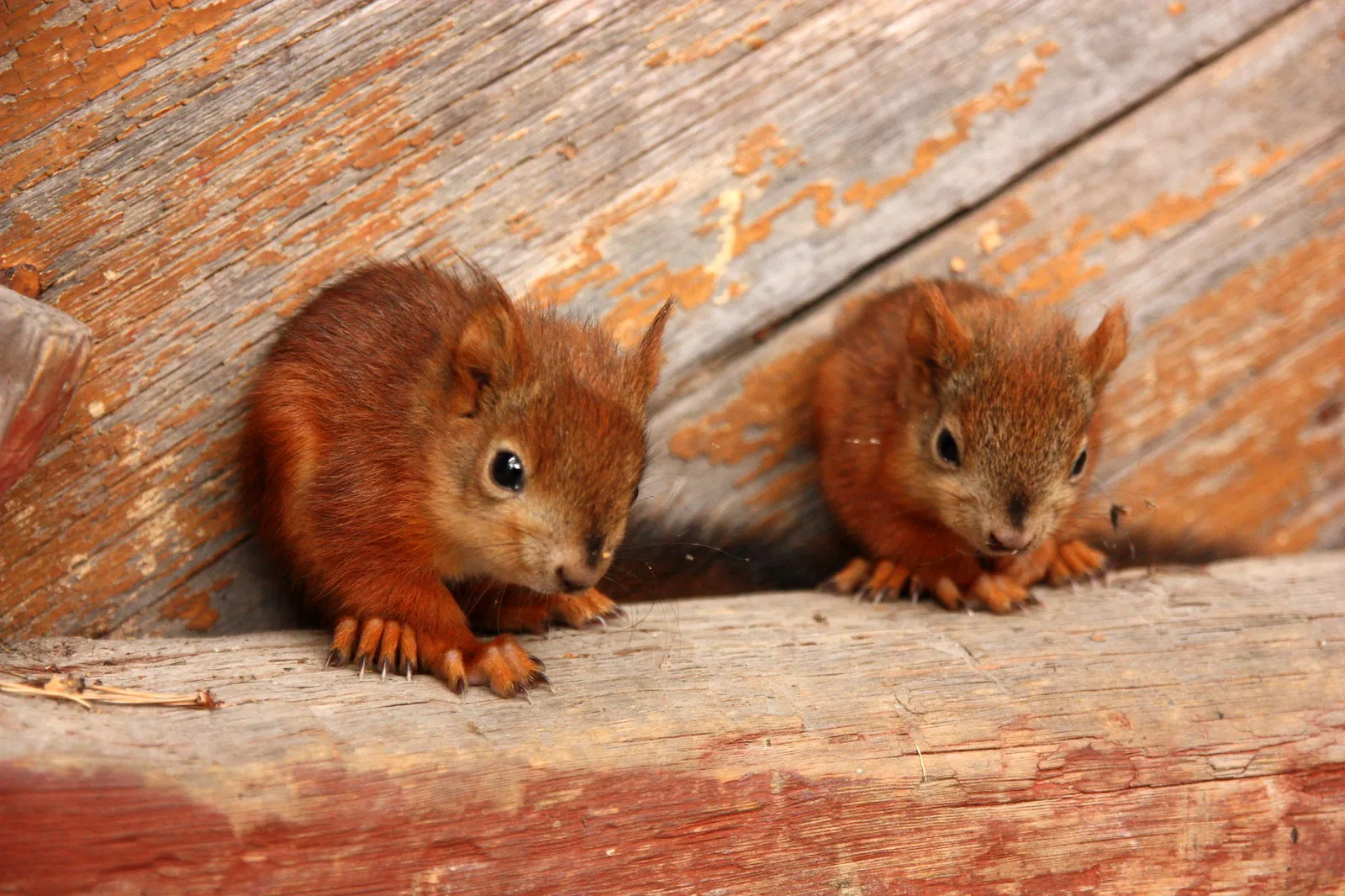
Rabbit:
Limited parental care, with mothers providing brief nursing sessions.
Young rabbits (kits) are precocial, developing rapidly for early independence.
Squirrel:
More involved parental care, including extended nursing periods.
Young squirrels (pups) are altricial, requiring more care and protection.
Comparison: Squirrels invest more time and effort in parental care compared to rabbits, contributing to the survival and development of their offspring.
Ecological Implications: Parental behaviors impact the survival rates of young individuals and contribute to population dynamics within their respective habitats.
20. Proximity to Human-Inhabited Areas
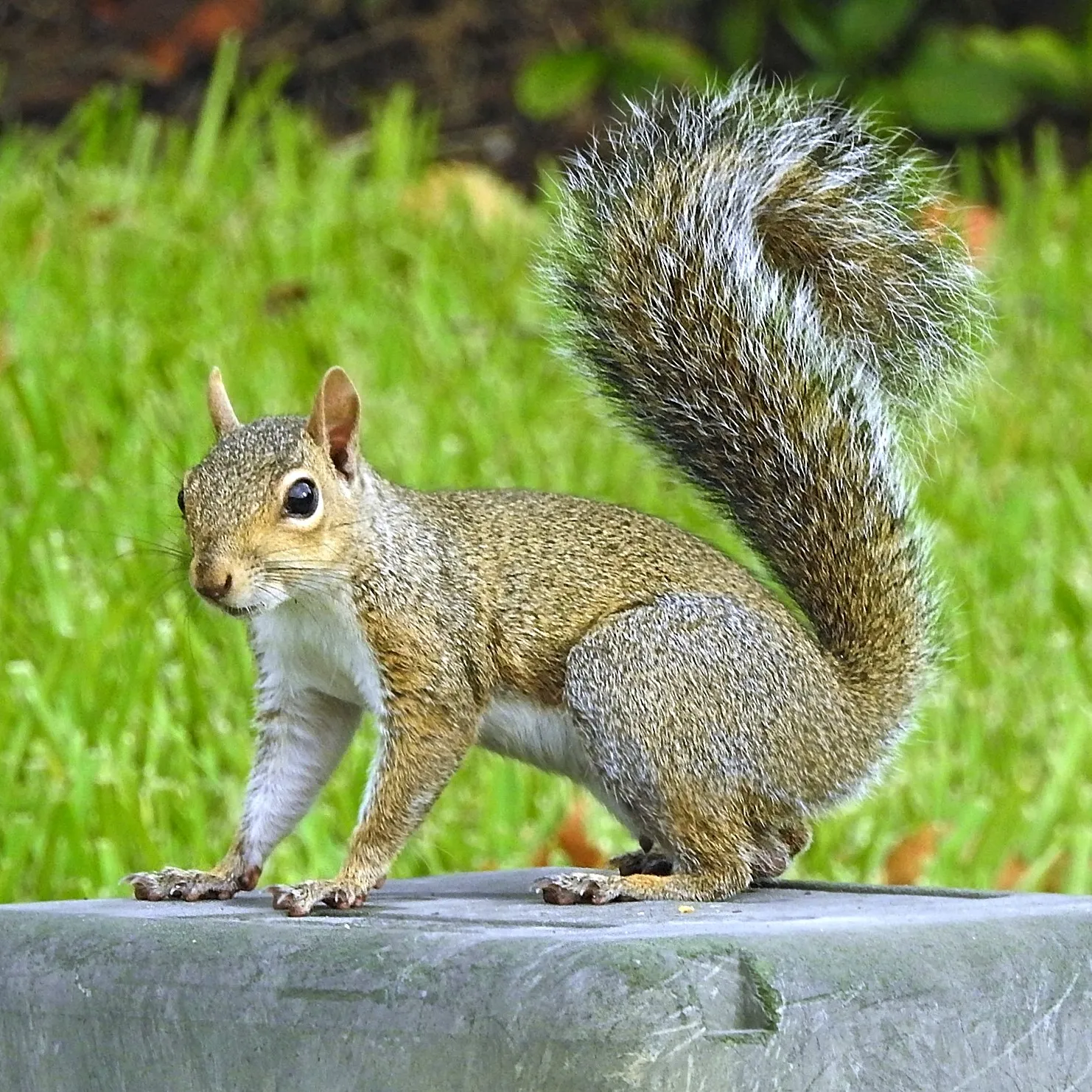
Rabbit:
Adaptable to urban and suburban environments, often seen in gardens and parks.
May utilize human structures for shelter, such as burrows under buildings.
Squirrel:
Highly adaptable to urban settings, frequently encountered in parks and residential areas.
Utilizes trees and man-made structures for nesting sites.
Comparison: Both rabbits and squirrels demonstrate a remarkable ability to coexist with humans, adapting to urban and suburban landscapes.
Ecological Implications: Proximity to human-inhabited areas influences their exposure to potential threats and resources, contributing to their ecological impact.
21. Behavior Toward Humans
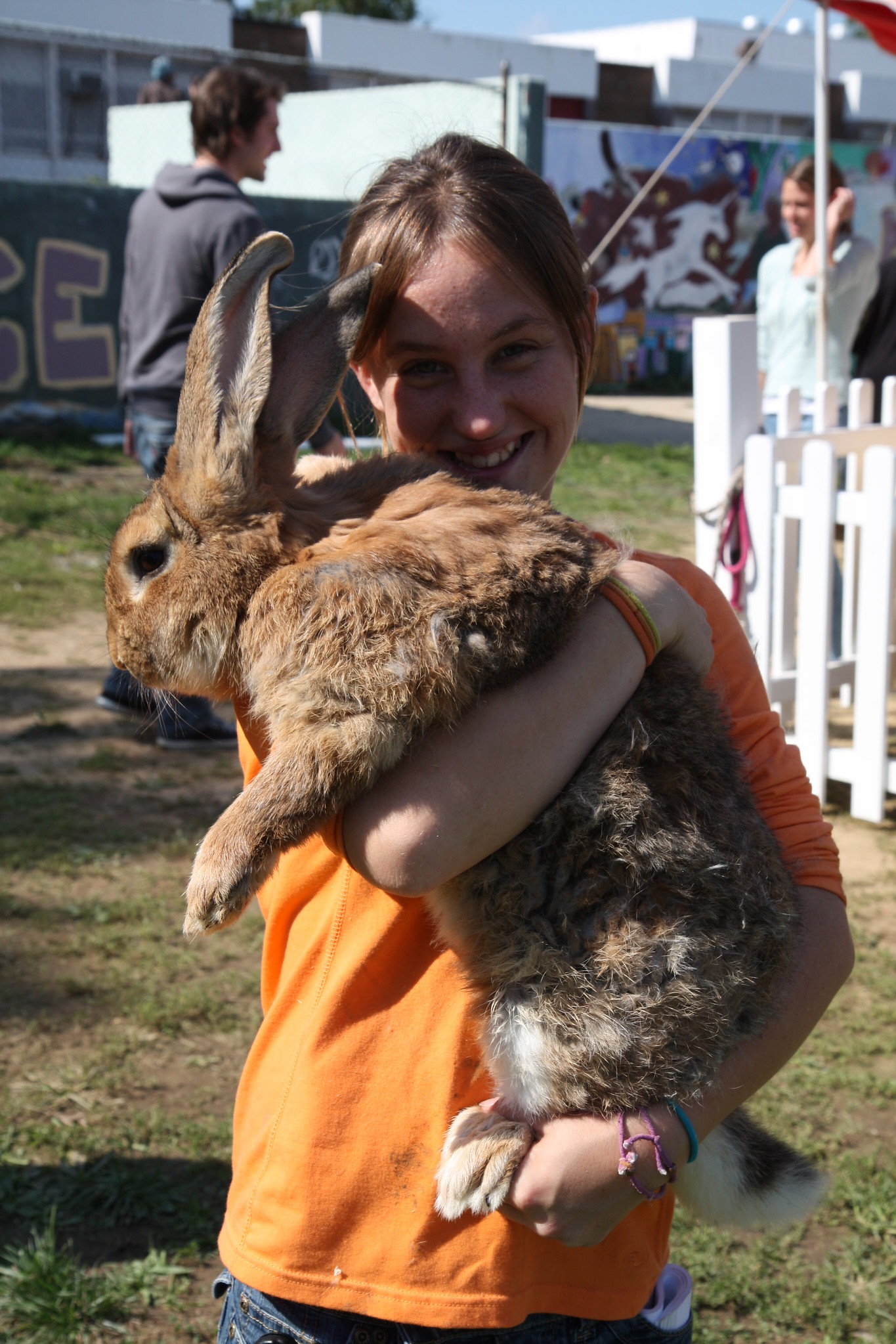
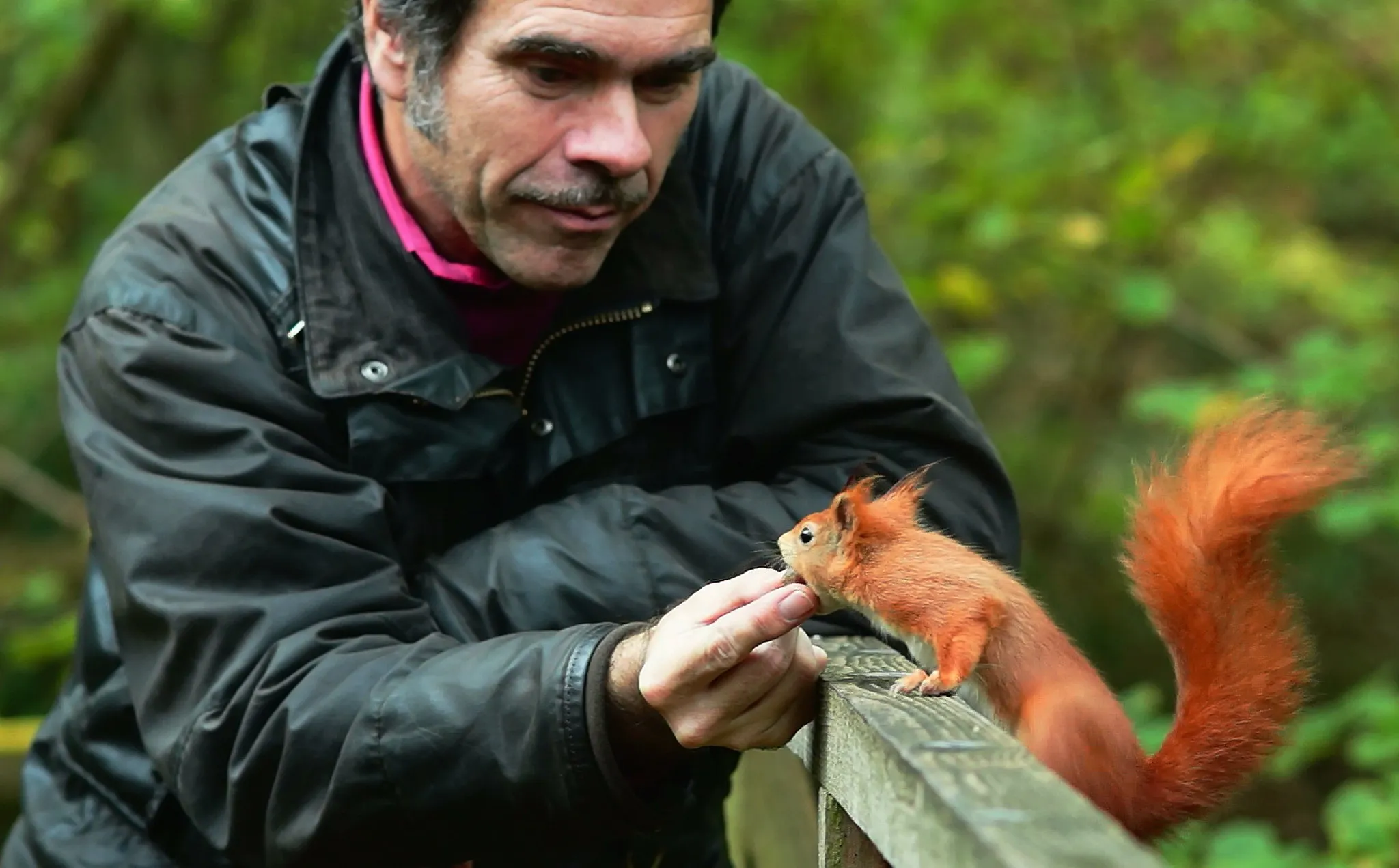
Rabbit:
Often cautious and may flee when approached by humans.
Can display territorial behavior in response to perceived threats.
Squirrel:
Exhibit varying responses; some may approach humans for food, while others remain cautious.
Adaptability to human presence, seen scavenging in urban settings.
Comparison: Squirrels are more likely to exhibit bold behavior in the presence of humans, approaching for food, while rabbits are generally more cautious.
Ecological Implications: Behavioral adaptations toward humans influence interactions, potentially affecting their survival and population dynamics in human-dominated landscapes.
22. Danger Posed to Humans
Rabbit:
Generally not dangerous to humans; more likely to flee than confront.
Rare instances of defensive behavior, such as scratching or biting, if cornered.
Squirrel:
Typically pose minimal danger to humans.
May bite if feeling threatened, but injuries are usually minor.
Comparison: Both rabbits and squirrels are not inherently dangerous to humans, with any potential threat primarily arising from defensive behaviors.
Ecological Implications: Limited danger to humans contributes to the coexistence of these species in human-inhabited areas.
23. Associated Precautions
Rabbit:
Caution needed in handling wild rabbits due to potential stress or injury.
Avoiding interference with nests to prevent abandonment by mothers.
Squirrel:
Caution when feeding, as bites may occur if squirrels feel threatened.
Not disturbing nests to prevent stress on mothers and young.
Comparison: Similar precautions are advised for both species, emphasizing non-interference to minimize stress and potential harm.
Ecological Implications: Responsible human behavior helps maintain natural behaviors and reproductive success in wild populations.
24. Conservation Status
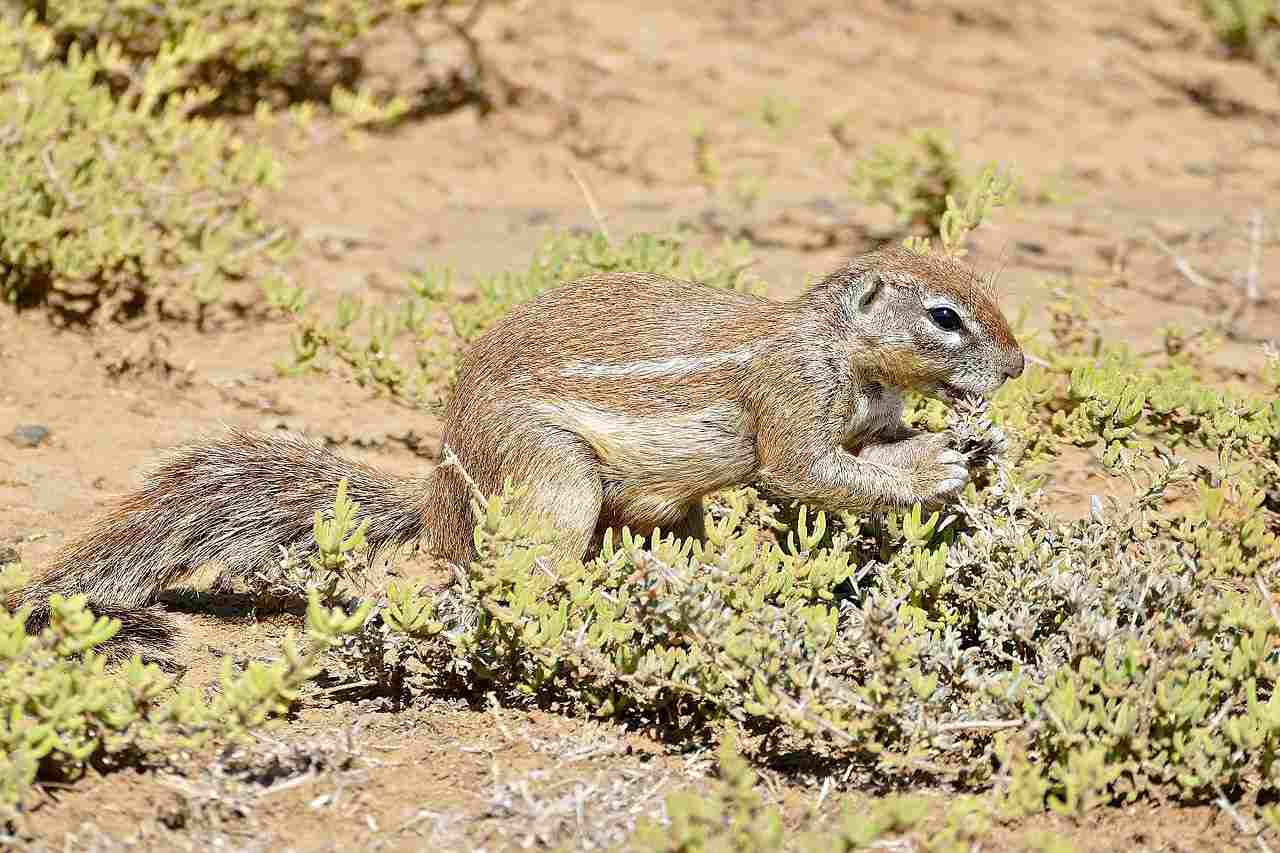
Rabbit:
Conservation status varies by species; some are of least concern, while others face threats.
Habitat loss, diseases, and predation contribute to conservation challenges.
Squirrel:
Diverse conservation statuses, ranging from least concern to endangered.
Threats include habitat loss, climate change, and, in some cases, hunting.
Comparison: Both rabbits and squirrels face conservation challenges, often related to habitat alterations and human activities.
Ecological Implications: Conservation efforts are essential to ensure the sustainability of these species and maintain their ecological roles within ecosystems.
*Summary of Comparison
Similarities:
Both adaptable to diverse habitats, including urban areas.
Share a herbivorous diet as primary consumers.
Differences:
Appearance:
Rabbits: Compact with long ears; squirrels: Slender with bushy tails.
Size:
Rabbits generally have a consistent medium size; squirrels exhibit a broader size spectrum.
Weight:
Rabbits have a more substantial weight range; squirrels have a wider size range.
Dentition and Bite Force (PSI):
Rabbits: Herbivorous dentition with limited bite force; squirrels: Rodent incisors with slightly higher bite force.
Physical Offensive Advantages:
Rabbits emphasize ground-based evasion; squirrels excel in both ground and tree-based defenses.
Physical Defensive Advantages:
Rabbits use rapid acceleration and burrowing; squirrels climb trees and employ camouflage.
Speed:
Rabbits are exceptional sprinters on the ground; squirrels balance agility on both ground and trees.
Agility:
Rabbits exhibit ground-based agility; squirrels excel in both ground and tree agility.
Senses:
Both rely on acute hearing; rabbits focus on motion detection, squirrels have more developed color vision.
Overall Physical Capacity:
Rabbits are specialized for ground activities; squirrels are versatile for ground and tree environments.
Habitat Preference(s) and Geographic Region:
Rabbits often dominate open grasslands; squirrels thrive in diverse ecosystems.
Tracks:
Rabbit tracks are elongated; squirrel tracks highlight claw marks and a hopping pattern.
Lifespan:
Squirrels generally have a longer potential lifespan.
Mode of Feeding:
Rabbits are herbivores; squirrels have a more varied omnivorous diet.
Intelligence:
Squirrels generally exhibit higher cognitive abilities.
Social Behavior:
Squirrels have a broader range of social behaviors.
Mode of Reproduction:
Rabbits are highly prolific breeders; squirrel reproductive strategies vary.
Parental Behavior:
Squirrels invest more time and effort in parental care.
Proximity to Human-Inhabited Areas:
Both species adapt well to urban and suburban landscapes.
Behavior Toward Humans:
Squirrels are more likely to exhibit bold behavior in the presence of humans.
Conclusion
I. Similarities
Both rabbits and squirrels display adaptability to diverse habitats, including urban environments.
They share a general herbivorous diet, contributing to their ecological roles as primary consumers.
II. Differences
Rabbits are more specialized for ground-based escape, while squirrels exhibit versatile agility for both ground and tree environments.
Squirrels generally demonstrate higher intelligence and more complex social behaviors than rabbits.
Reproductive strategies vary, with rabbits known for prolific breeding, while squirrels exhibit diverse reproductive adaptations.
Parental care is more involved in squirrels compared to the relatively limited care provided by rabbits.
